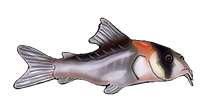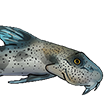I don't think salt is all that effective in the treatment of specific diseases as the primary "medication." There are so many othe r drugs that target specific diseases better. High doses of salt are no less harmful than pharmaceuticals. It is so much like the divide between those who swear by homeopathatic medicine and those who trust in the more dominant, at least in developed countries, the state of modern medicine.raglanroad wrote:but I do use salt, and not in small amounts, when I have disease issues. I don't like to use pharmaceuticals much. I've avoided heavy salt treatment for tanks with catfish included as a minority, without having any solid evidence to support the fears. I would rather treat the whole tank than net some fish out for treatment, or have to leave corys for other treatments in another tank.
Whether we are talking in the context of fish or human beings it becomes a personal choice.
I think we all agree salt has its uses but that it is not the treatment of choice for specific diseases.
One area in fish keeping where salt is demonstrably useful is in raising some species of Killiefish fry. Nothobranchius spp and Aphyosemion striatum fry are extremely prone to velvet and velvet can kill fry very quickly compared to adult fish. It is wide spread practice to keep 1-1/2 tsp of salt per gallon in their grow out tanks. The adults are not as susceptible to velvet and salt can be omitted. However if one has very low TDS water it is a good idea to retain about 1 tsp/gal of salt with Nothobranchoius spp or raise the hardness and pH by other means since they come from harder water than rain forest killies. Killies,overcrowding and velvet go hand in hand and by not crowding the fry and keeping the water very fresh and clean, velvet becomes much less of a problem.




